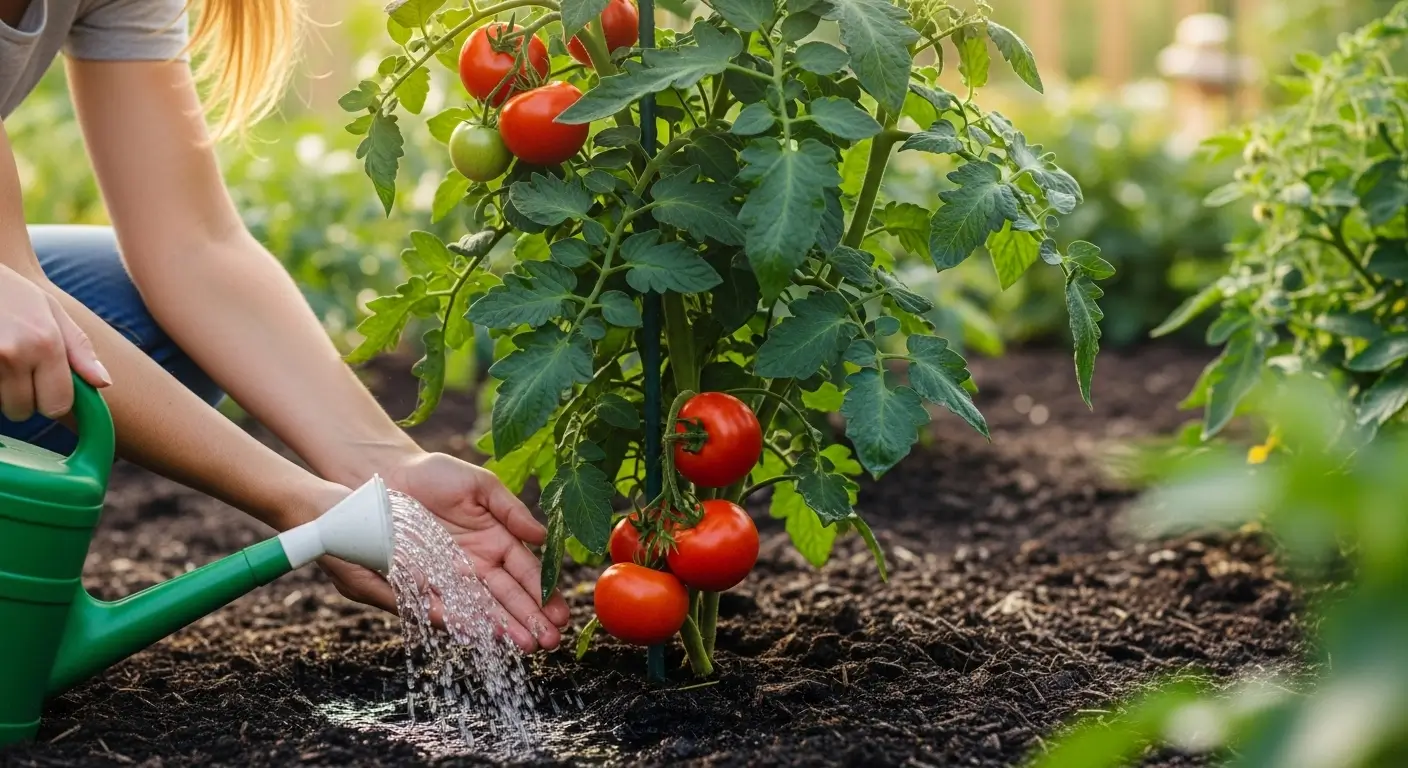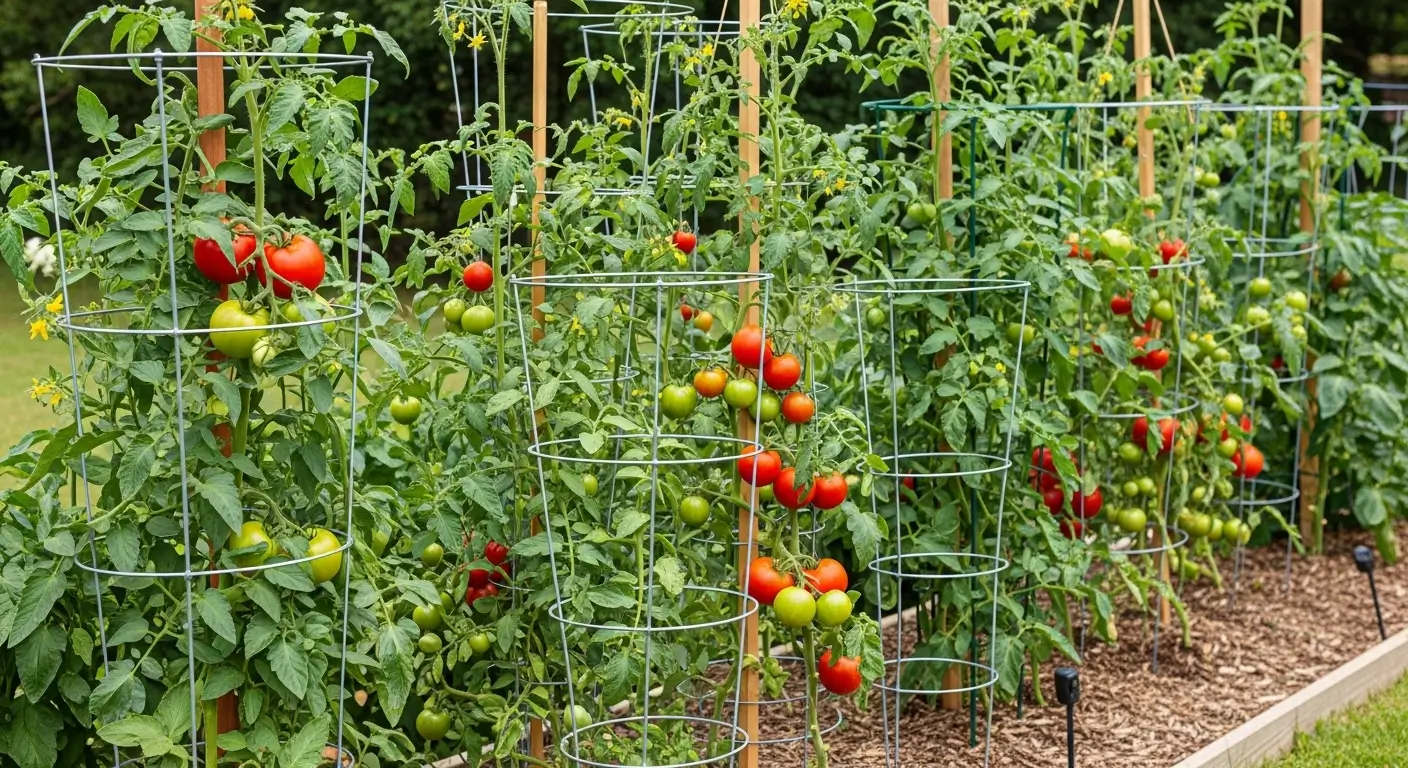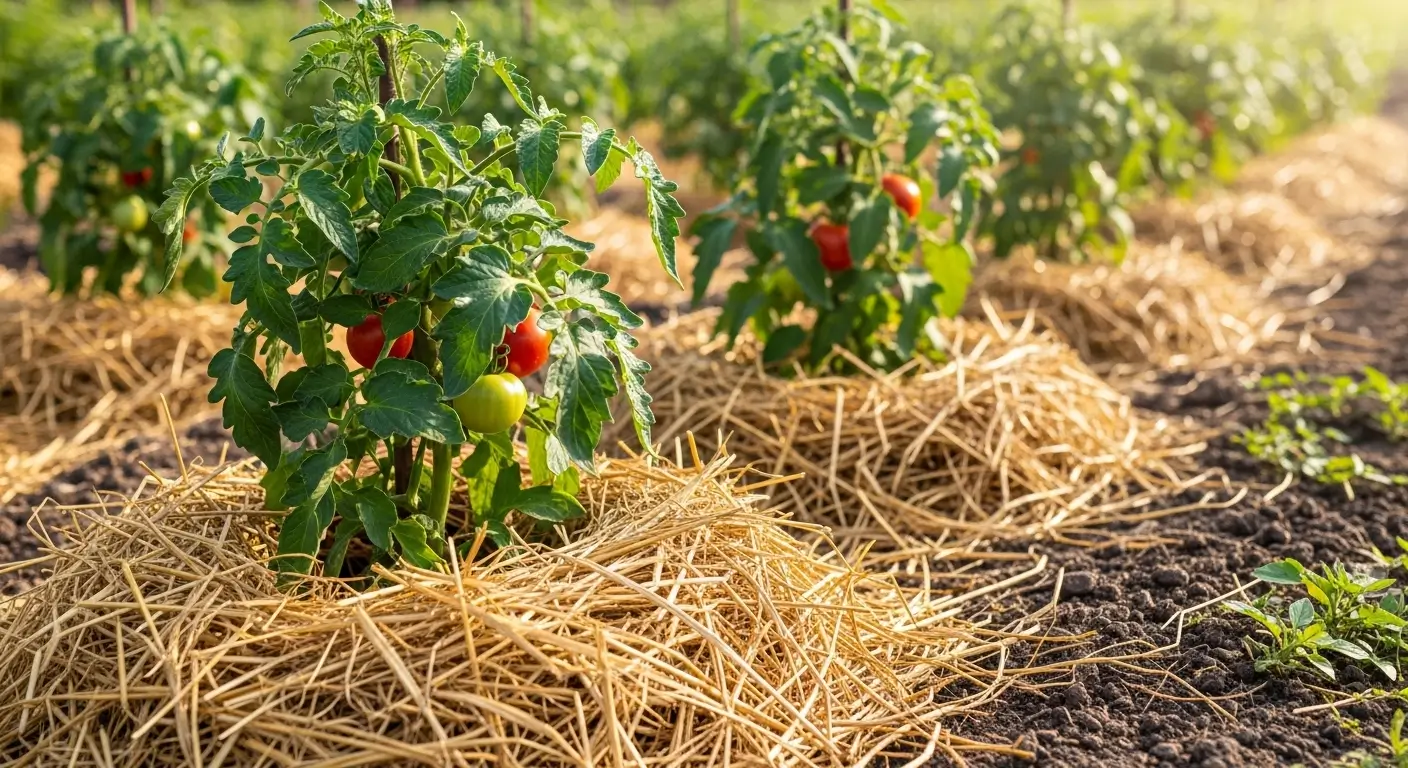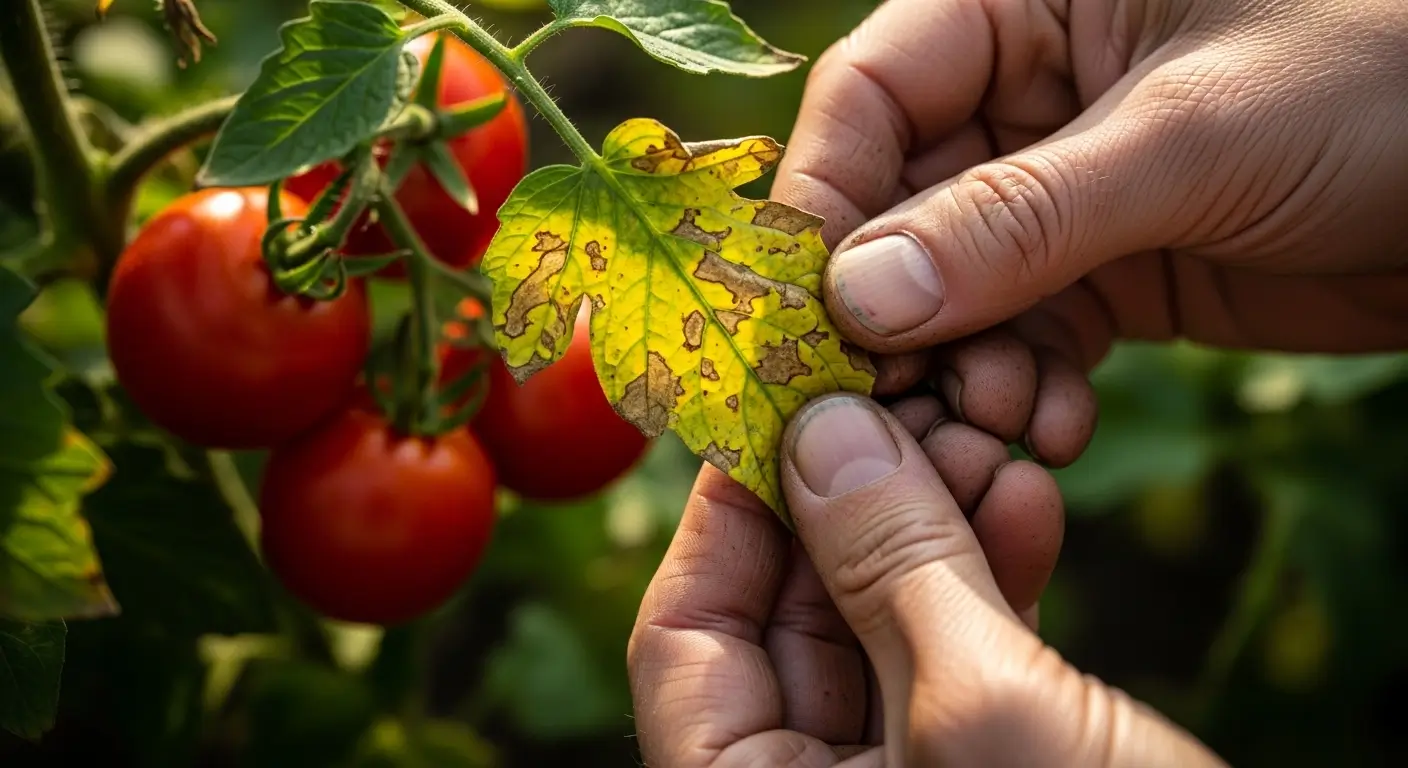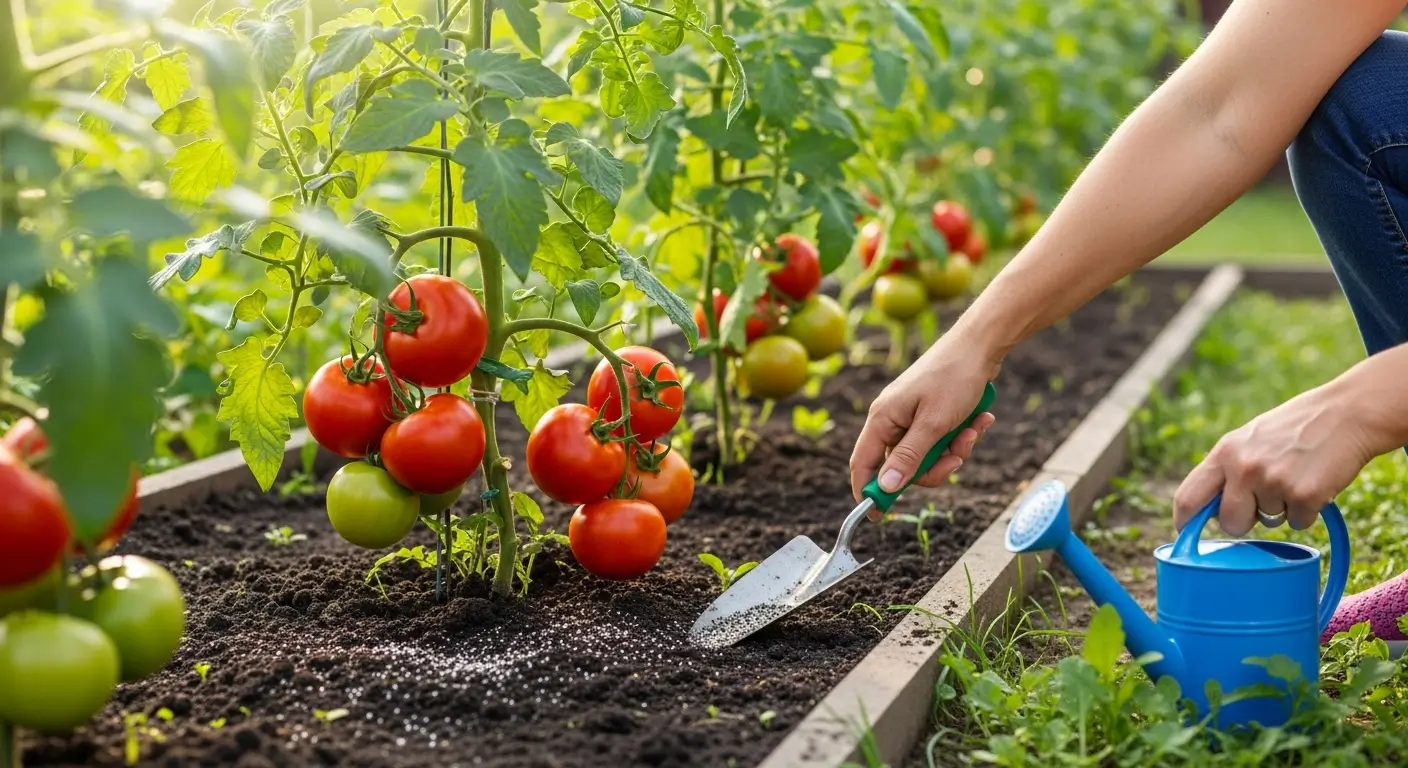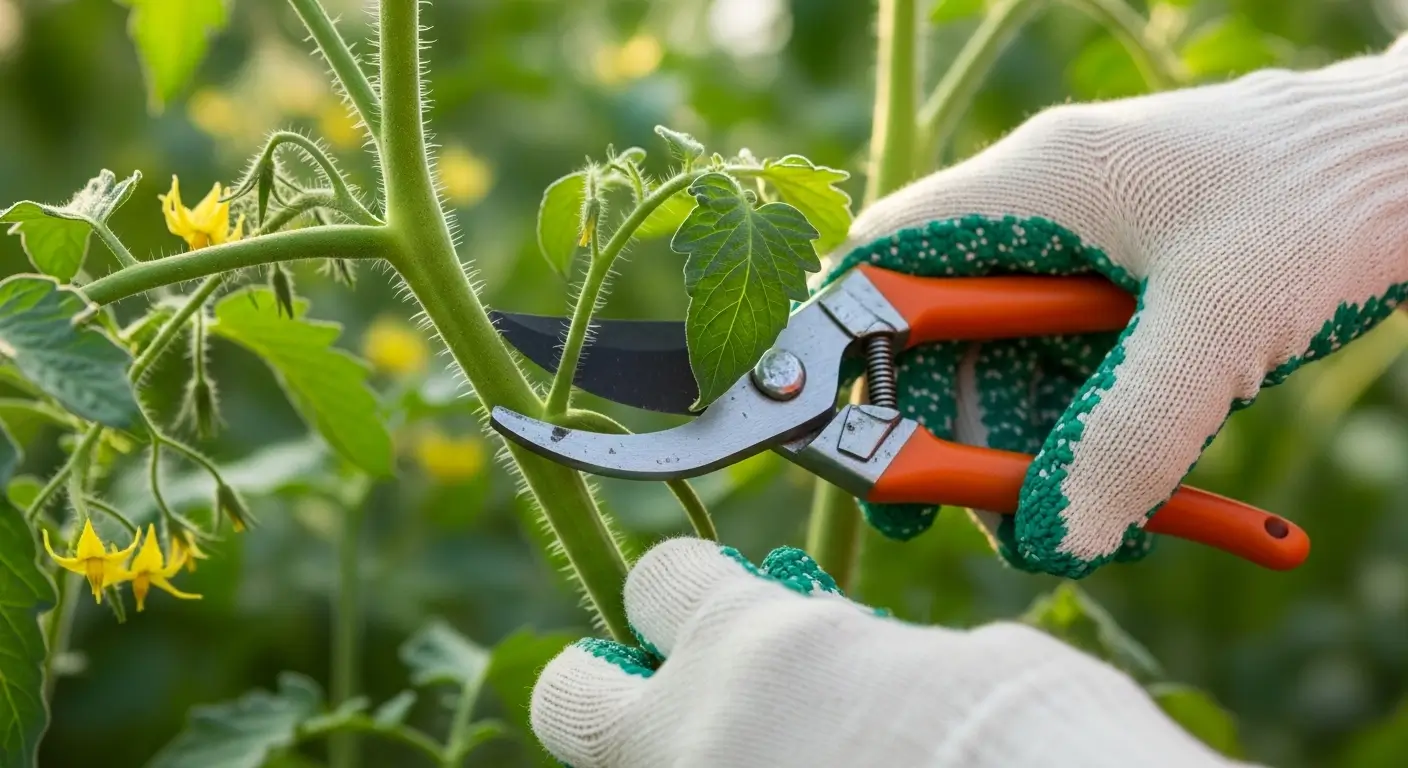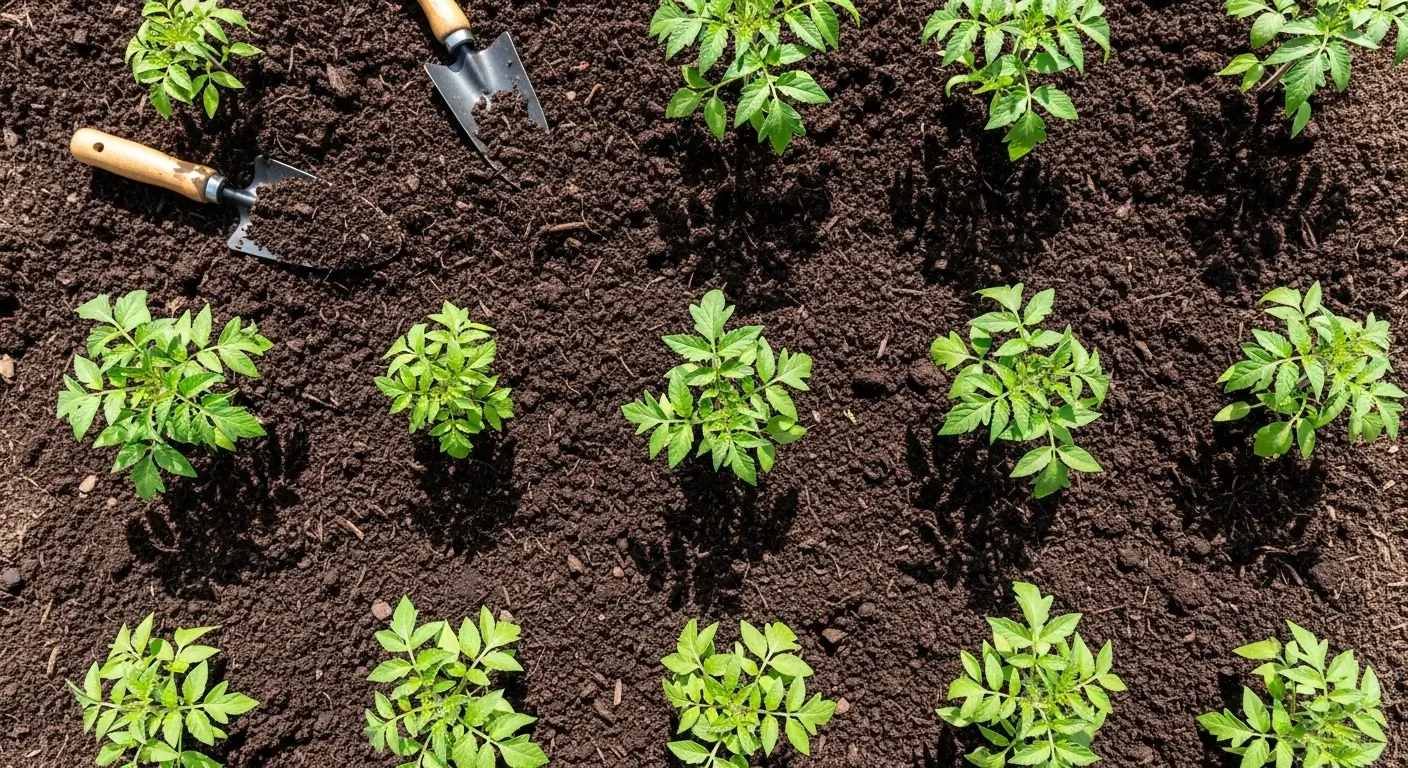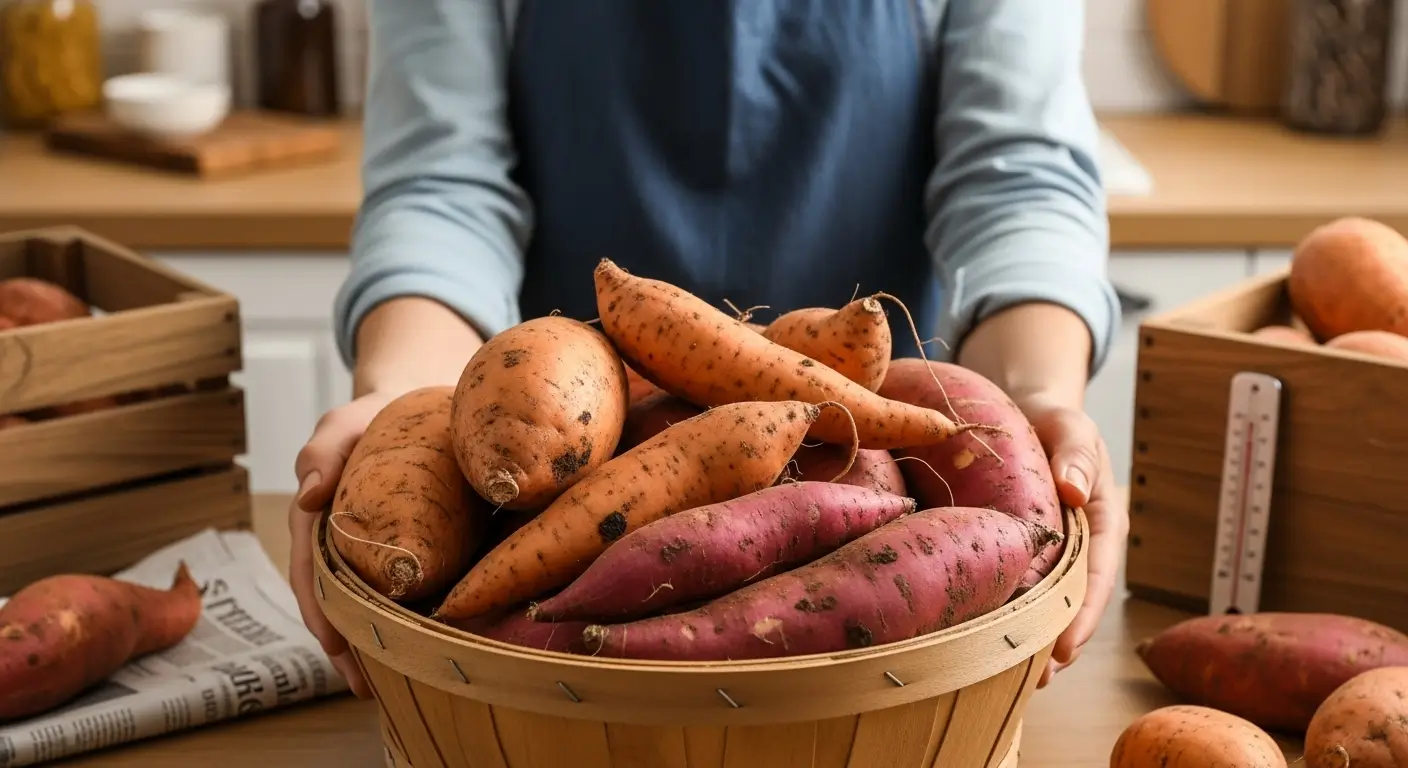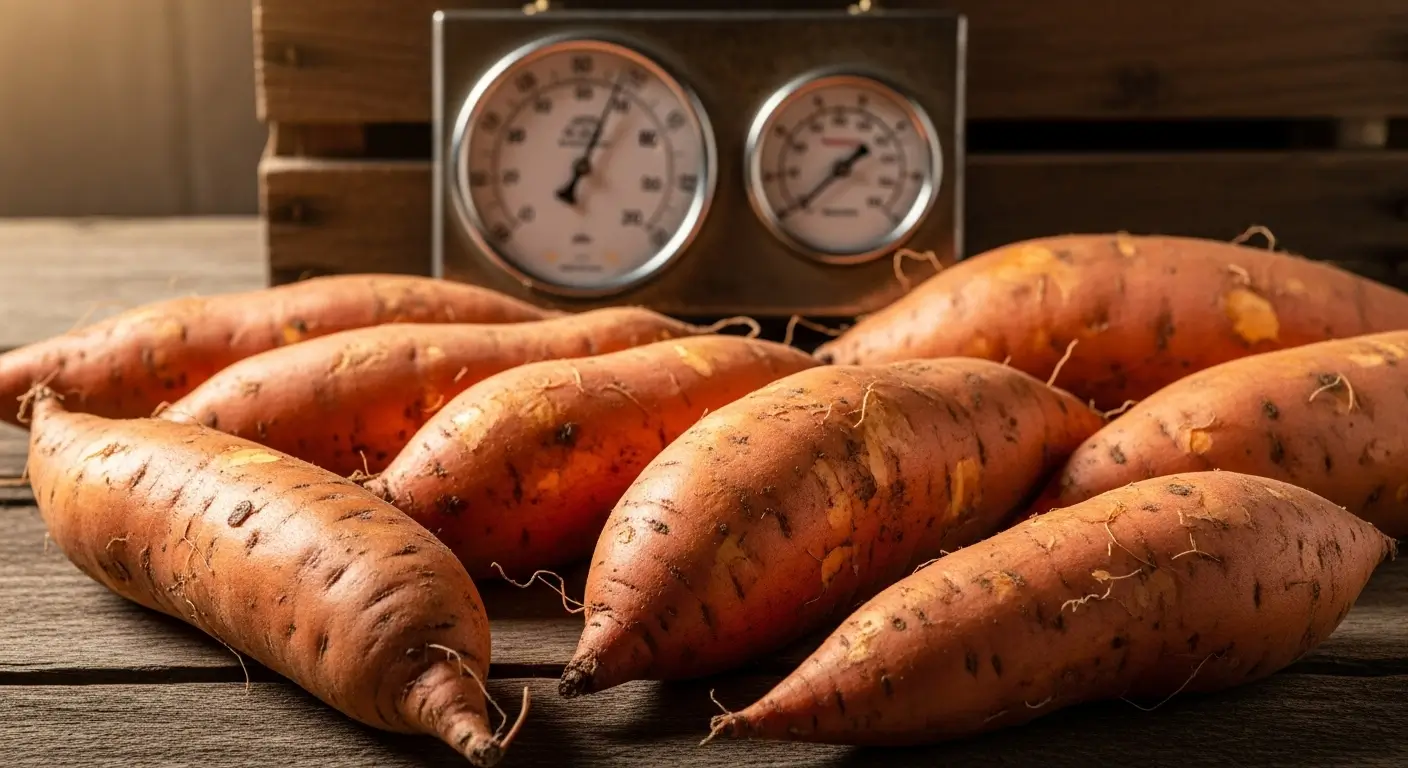Okay, can we talk about how I used to be a total plant murderer? Seriously, I killed more tomato plants with my “love” than most people do with neglect. Every single morning, I’d march out there with my hose, thinking I was the world’s best plant mom. Spoiler alert: I wasn’t. I was drowning my poor tomatoes and wondering why they looked so sad and pathetic.
It took me way too many seasons (we’re talking three years of epic fails here) to figure out that getting the watering schedule for tomatoes right isn’t rocket science, but it’s also not as simple as “water them every day.” Trust me, I learned this hard, through split tomatoes, yellow leaves, and some seriously questionable gardening decisions.
After fifteen years of growing these drama queens (and yes, tomatoes are total drama queens), I’ve finally cracked the code. And let me tell you, once you nail the watering thing, it’s like your tomatoes suddenly decide to cooperate. Healthy plants, gorgeous fruit, neighbors asking for your secrets – the whole nine yards.
So grab your coffee, and let me spill all my tomato watering secrets. Because honestly, if I can go from serial plant killer to someone who actually knows what they’re doing, you’ve totally got this.
Table of Contents
Why Your Watering Schedule for Tomatoes Matters More Than You Think
Here’s what nobody tells you when you start growing tomatoes: these plants are basically the Goldilocks of the vegetable world. Too much water? They’ll throw a tantrum with root rot and split fruit. Too little? Hello, blossom end rot and bitter, sad tomatoes. But get it just right? Chef’s kiss – pure gardening magic.
I wish someone had sat me down early and explained that tomatoes want consistent moisture, not a daily shower. Think of it like this: would you rather someone give you tiny sips of water all day or one good drink when you’re thirsty? Yeah, tomatoes feel the same way.
The game-changer for me was understanding that when you water lightly every day, you’re basically training your tomato roots to be lazy. They hang out near the surface, waiting for their daily drink instead of growing deep where the good, stable moisture lives. It’s like enabling a couch potato, but for plants.
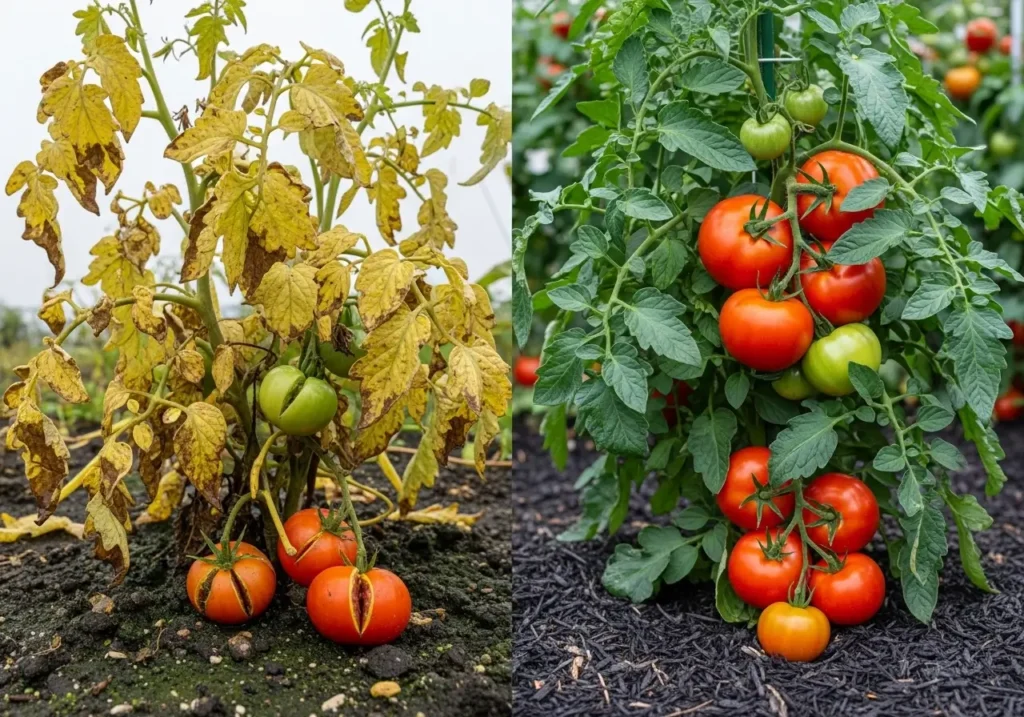
Understanding How Often to Water Tomatoes: The Goldilocks Principle
So everyone wants to know how often to water tomatoes, right? And honestly, I used to hate this question because the answer is super annoying: it depends. I know, I know – not what you wanted to hear. But stick with me here, because once you get the hang of reading your plants and yard, it becomes pretty intuitive.
Factors That Affect Watering Frequency
Your Soil Situation: Clay soil holds onto water like it’s hoarding toilet paper during a pandemic. Sandy soil? It’s basically a sieve. In my yard, I’ve got both (lucky me), and my clay-heavy spots need water maybe twice a week, while my sandy areas are like “Feed me, Seymore!” every couple of days.
Weather Drama: Yeah, hot days mean more water – duh. But here’s what caught me off guard: windy days are water thieves, too. And don’t even get me started on those weird humid-but-hot days that mess with everything.
Plant Age: Baby plants are needy little things that want attention daily. Grown-up plants? They’re more chill and can better handle the “feast or famine” approach.
Pots vs. Ground: If you’re growing tomatoes in containers, welcome to the daily watering club. Sometimes, twice daily, if it’s really cooking outside. Container soil dries out faster than my sense of humor in August heat.
My Totally Unscientific But Totally Works Watering Schedule
I do the deep watering for my big plants in the garden 2-3 times a week. Container plants? In the summer, sometimes I cheat and make self-watering containers daily because I’m lazy. But here’s my secret weapon – I always stick my finger in the dirt first. If it’s dry down to my second knuckle, it’s watering time.
Deep Watering Tomatoes: The Game-Changing Technique
OMG, let me tell you about the day my gardening life changed forever. My neighbor Mrs. Rodriguez (who grows tomatoes that should probably win awards), finally took pity on my pathetic plants and shared her wisdom. She watched me do my little daily sprinkle routine and shook her head.
“Grace, honey,” she said, “you’re giving your plants a snack when they need a full meal.”
That’s when she introduced me to deep watering tomatoes, and seriously, it was like someone turned on the lights. Game. Changer.
What Deep Watering Actually Means
Deep watering is giving your plants a good, long drink instead of a bunch of little sips. Instead of that quick sprinkle I used to do, you water slowly and thoroughly so it actually soaks way down into the soil.
Here’s how I do it now: I either use a soaker hose (best invention ever) or I stand there with my hose on the gentlest setting and just let it run. I’m talking 1-2 inches of water – yeah, I actually measure this stuff now with one of those rain gauge thingies. The University of Massachusetts Extension recommends at least 1 inch of water per week for healthy tomato production, which totally backs up what I’ve learned through trial and error. It takes me like 30-45 minutes to properly water my 20 plants, but it’s totally worth it.

Why This Actually Works
When you water deeply but not as often, you’re basically forcing those roots to grow down where the moisture hangs out longer. Shallow roots are wimps – they freak out at the first sign of heat. Deep roots are like the strong, silent types that can handle whatever summer throws at them.
Plus, I noticed fewer gross diseases on my plants once I stopped constantly splashing water on their leaves. Turns out, wet leaves are like sending out party invitations to every fungus in the neighborhood. Who knew?
Creating Your Tomato Watering Schedule: A Step-by-Step Approach
Okay, let’s get into the nitty-gritty of actually making this work in your garden. Here’s my system that went from “what am I even doing” to “I’ve got this figured out.”
Step 1: Figure Out Your Soil
Before you can water like a pro, you gotta know what you’re working with. I learned this lesson when I moved houses and my bulletproof watering routine suddenly stopped working. Turns out, different soil = different rules. The best tomato soil should drain well but not be a total water-hog.
Do this super simple test: dig a hole about a foot deep and fill it with water. If it drains in 6-12 hours, you’re golden. If it’s still sitting there the next day looking at you sadly, you might need to add some compost or think about raised beds.
Step 2: Get Your Watering Game Set Up
I’m totally obsessed with soaker hoses because they’re like having a personal watering assistant. Drip irrigation is fancy if that’s your thing. If you’re doing the hand-watering thing (been there), use a watering wand or put your hose on shower mode – never blast your plants like you’re washing your car.
For containers, self-watering pots are honestly a lifesaver. If you don’t have those, just water until it runs out of the bottom holes. Easy peasy.
Step 3: Start With This Basic Schedule
Here’s what I do, but feel free to adjust because every garden is different:
- Brand new baby plants: A little drink every day for the first week (they’re scared and need reassurance)
- Getting established (weeks 2-4): Every other day, slowly ramping up the amount
- Big kid plants: 2-3 times per week, the whole deep watering treatment
- Plants making fruit: Keep it consistent – they’re working hard and need reliable hydration
Step 4: Actually Pay Attention
This is where a lot of people stop, but don’t! I check on my plants every morning with my coffee. I’m looking for drama (wilting, yellowing, general plant attitude) and do the finger-in-soil test regularly. Your plants will totally tell you what they need if you pay attention.
Okay, I know what you’re thinking – “Grace, this is a lot to remember!” Trust me, I get it. When I was starting out, I used to write everything down on a sticky note and tape it to my watering can because I’d forget what I was supposed to be doing.
So I made something that’ll do the thinking for you. Answer a few quick questions about your setup, and this little tool will create a personalized watering schedule based on everything I’ve learned over the years. It’s like having me right there in your garden, minus the coffee breath and muddy boots:
🍅 Find Your Perfect Tomato Watering Schedule
See how much easier that is? Now you’ve got a starting point that’s actually tailored to your situation instead of just winging it like I did for way too many seasons.
Seasonal Adjustments: Adapting Your Watering Throughout the Growing Season
Here’s something that took me way too long to figure out – your tomatoes’ water needs change throughout the season like a toddler’s mood. What works in cool spring is gonna be totally wrong in blazing summer.
Spring: The Gentle Introduction
When I first put my babies outside in spring, the soil is usually still pretty moist from winter. I go easy on new transplants – maybe a cup of water every day or two. Just enough to help them settle in without freaking them out.
The hardest part here is restraint. You want them to grow faster, but drowning them in cool, wet soil is like force-feeding someone who’s not hungry. Not good.
Summer: When Things Get Real
Summer is when I really have to step up my game. During those brutal hot spells (and trust me, Illinois summers can be rough), I might water every other day, sometimes daily, for my container plants.
I’ve learned that some afternoon wilting is normal – it’s like the plant version of sweating. But if they’re still looking sad in the evening or early morning, that’s their way of saying “Help!”
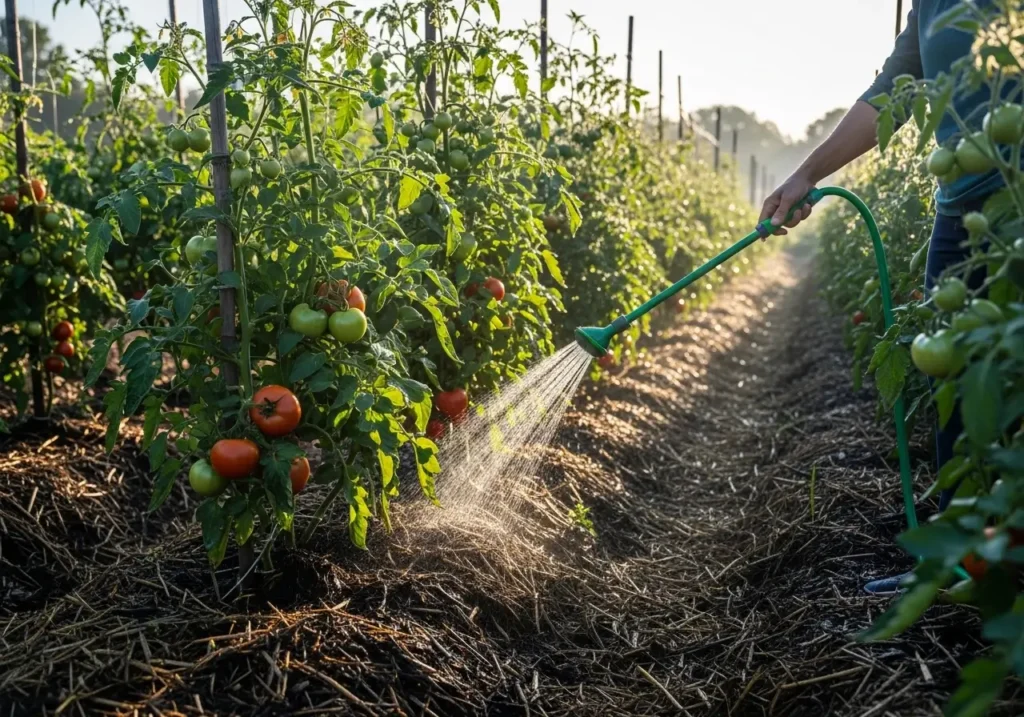
Late Summer/Early Fall: Winding Down
As we head toward fall, I actually ease up a bit on the watering. The plants are all grown up now, and I want those flavors to concentrate in the fruit. Too much water late in the game makes tomatoes split right when you want to pick them. So frustrating!
Common Watering Mistakes (That I’ve Made So You Don’t Have To)
Let me save you some heartache by sharing my most significant hits of watering disasters:
Mistake #1: Showering the Leaves
For years, I used a sprinkler to water my whole garden. Seemed so efficient! I was giving every plant disease a VIP invitation to the party. Wet leaves + evening watering = fungus fiesta. Now I’m all about that soil-level watering life.
Mistake #2: The Hot and Cold Treatment
Life happens, right? Some weeks, I was the most attentive plant parent ever, watering every single day. Other weeks, I’d completely forget and then panic-water everything. Result? Cracked fruit that looked like it went through an earthquake, blossom end rot, and generally stressed-out plants. Consistency really is everything.
Mistake #3: The Daily Sprinkle Habit
This was my signature move for way too long. I thought I was being so good, giving my plants a little drink every day. I was creating a bunch of water-dependent weaklings with pathetic, shallow roots. Once I switched to deep watering, my plants became warriors.
Mistake #4: Naked Soil
I used to think mulch was just for show-off gardeners. Wrong! A good layer of organic mulch around my tomatoes has completely changed my watering game. Less evaporation, more consistent soil temperature, and happier plants all around. Now I won’t grow tomatoes without it.
Troubleshooting Your Tomato Watering: Reading the Signs
After all these years, I’ve gotten good at plant body language. Here’s what to watch for:
Your Plants Are Thirsty When:
- They’re wilting and don’t perk up by evening
- Leaf edges are getting crispy and brown
- Fruit looks small and super concentrated
- You’re getting blossom end rot (though this can be other things, too)
- The container soil is pulling away from the edges
You’re Drowning Them When:
- Lower leaves are turning yellow
- Roots look mushy and dark (if you can see them)
- Fungus problems are popping up everywhere
- Fruit tastes watery and blah
- The soil smells funky
The Sweet Spot Looks Like:
- Beautiful, deep green leaves
- Steady growth that makes you proud
- Flowers that actually turn into fruit
- Tomatoes that taste like summer sunshine
- Plants that can handle a little stress, like champs
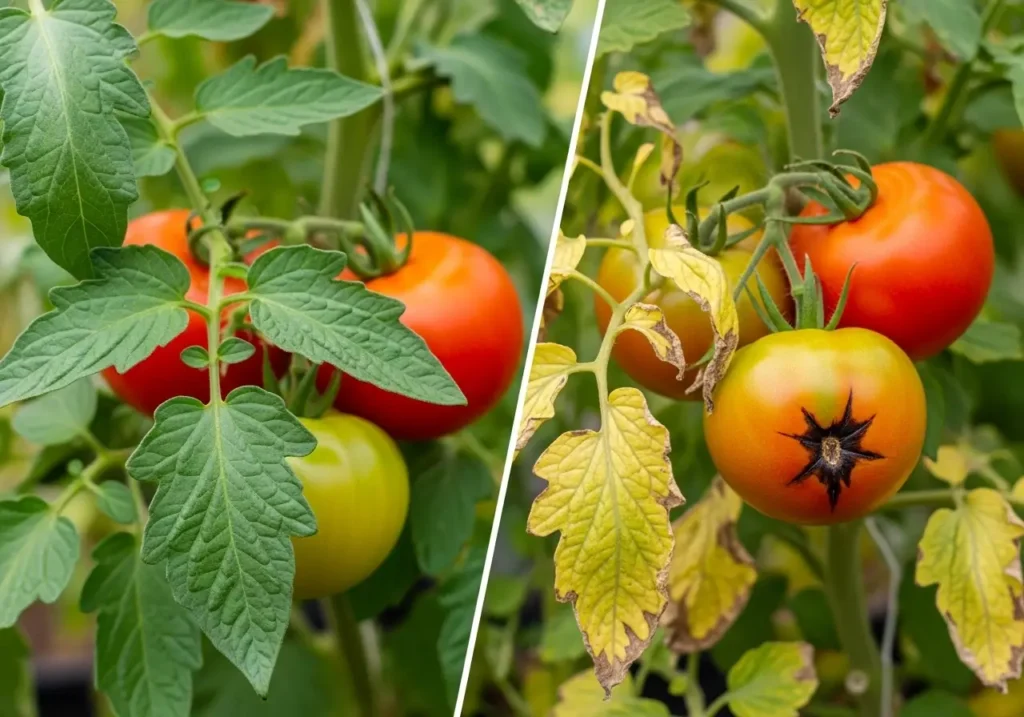
Advanced Watering Techniques for Better Tomatoes
Once you’ve got the basics down, here are some tricks that really took my tomato game to the next level:
Mulching Like a Pro
I mentioned mulch earlier, but let me geek out about it for a second. I use a mix of straw and grass clippings around my plants, keeping it a couple of inches away from the stem so bugs don’t set up camp. This one change cut my watering needs by almost half and made everything so much more consistent.
Becoming a Weather Nerd
I keep rain gauges near my tomato beds because I’m that person now. But seriously, it’s amazing how different your perception of rainfall is from reality. That “huge storm” might have only given your plants a quarter inch of water.
The Morning Routine
I do all my watering early in the morning, around 6-7 AM. Plants get all day to drink up, but the leaves dry fast once the sun rises. Less disease, happier plants, and I get to start my day in the garden with my coffee. Win-win-win.
Special Considerations for Different Growing Situations
Depending on how you’re growing your tomatoes, you might need to tweak things a bit:
Raised Bed Life
If you’re considering raised bed tomatoes, just know they drain faster than regular ground beds. I water my raised bed tomatoes about 25% more often. Still, the trade-off is having way better control over everything else.
Container Gardening
Container tomatoes are like having high-maintenance pets – they need daily attention in hot weather. I check them every day and water whenever the top inch feels dry. Self-watering containers have honestly been life-changing for this lazy gardener.
Greenhouse Growing
In my little greenhouse, it’s all about humidity and air flow. I water less often, but I’m super paranoid about ventilation because fungus loves those warm, humid conditions.
Key Takeaways for Perfect Tomato Watering
Okay, here’s what I really want you to remember from this whole rambling session:
- Consistency beats frequency every time – better to water well twice a week than poorly every day
- Deep watering makes vigorous plants – train those roots to be tough
- Your plants are talking, so listen – they’ll tell you what they need
- Mulch is basically magic – seriously, just do it
- Keep the leaves dry – water the soil, not the plant
- Every garden is different – adjust for your specific situation
Your Tomato Watering Journey Starts Now
Look, I know this seems like a lot, but once you get into the groove, it becomes totally automatic. You’ll start instinctively knowing when your plants need water, and trust me, the difference in your harvest will blow your mind.
The most important thing? Start paying attention to your plants. They’re constantly giving you feedback if you know what to look for. And for everything you need to know about growing amazing tomatoes, check out our complete how-to-grow-tomatoes guide – it’s got all the good stuff.
Don’t stress if it takes a season or two to figure out your rhythm. I definitely didn’t become a tomato watering expert overnight, and I’m still learning new things every year. That’s what makes gardening so addictive – there’s always something new to discover.
Start with what I’ve shared here, keep your eyes on your plants, and adjust as you go. Before you know it, you’ll be the one all your neighbors come to for advice. And there’s honestly no better feeling than biting into a perfect homegrown tomato that you babied from seedling to harvest.
So what’s your biggest tomato watering challenge? I’d love to hear what’s driving you crazy and help you figure it out. Drop a comment and let’s troubleshoot together – because we’re all in this gardening adventure together!
Frequently Asked Questions About Tomato Watering Schedules
How often should I water my tomato plants?
Water mature tomato plants 2-3 times per week with deep watering sessions that provide 1-2 inches of water. Container plants need daily watering in hot weather. New transplants should be watered daily for the first week, then gradually reduced to every other day as they establish.
What is deep watering and why is it better for tomatoes?
Deep watering means applying water slowly and thoroughly so it penetrates deep into the soil rather than just wetting the surface. This technique encourages tomato roots to grow deep where moisture levels are more stable, making plants more drought-resistant and healthier overall.
When is the best time of day to water tomatoes?
Early morning (6-8 AM) is the best time to water tomatoes. This gives plants all day to absorb the water while allowing the foliage to dry quickly as the sun comes up, which reduces the risk of fungal diseases.
How do I know if I’m watering my tomatoes too much or too little?
Signs of overwatering include yellowing lower leaves, mushy roots, and fungal problems. Signs of underwatering include wilting that doesn’t recover by evening, brown crispy leaf edges, and blossom end rot. The perfect balance shows deep green foliage, steady growth, and firm flavorful fruit.
